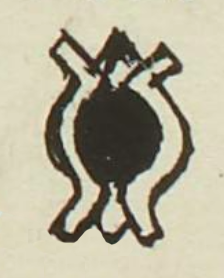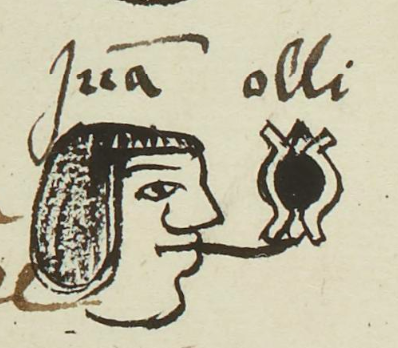Olli (MH593r)
This black-line drawing of the compound glyph for the personal name Olli (“Rubber” or "Rubber Ball," attested here as a man’s name) shows a frontal view of a large rubber ball (olli). Surrounding the ball, however, is the quincunx-shaped sign for movement (olin), which is seemingly wrapped around the ball to provide phonetic complement, as it is a near homophone.
Stephanie Wood
This glyph is nearly identical to the one on MH491r. There are several glyphs that really could be intended to be olin or olli, given that the glosses could be in error either way, adding an "n" at the end or dropping it away when it should be there. Since many of these signs have both the olin (movement) sign as well as a black rubber ball (olli) in the center, its something like a situation of a chicken and an egg--which came first, or which is the primary reading and which is an added phonetic support? It does seem, in some cases, that if just ball was meant, the glyph could have been simpler. So perhaps this should be titled Olin.
Stephanie Wood
Juā olli
Juan Olli
Stephanie Wood
1560
Jeff Haskett-Wood
rubber, hule, movement, movimiento

ol(li), rubber, https://nahuatl.wired-humanities.org/content/olli
ol(in), movement, https://nahuatl.wired-humanities.org/content/olin
El Hule, o El Movimiento
Stephanie Wood
Matrícula de Huexotzinco, folio 593r, https://www.loc.gov/resource/gdcwdl.wdl_15282/?sp=265.
This manuscript is hosted by the Library of Congress and the World Digital Library; used here with the Creative Commons, “Attribution-NonCommercial-ShareAlike 3.0 License” (CC-BY-NC-SAq 3.0).



